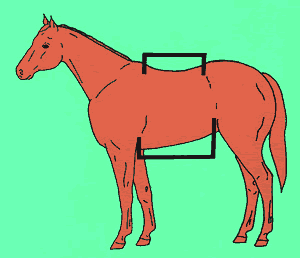
Ashley Griffin, University of Kentucky
The length and shape of the horse’s neck is important, because the horse uses it as a balancing arm. The throatlatch, which is the junction between head and neck from ear to ear, should be trim and refined, regardless of breed. If a horse is thick and coarse in the throatlatch, air and blood flow may be restricted when the horse is asked to flex and bend at the poll. A trim, refined throatlatch allows the horse to perform while breathing correctly.
The ideal neck would be approximately a two-to-one ratio of the top to bottom line of the horse’s neck. The top line is the distance from the poll to the withers, and the bottom line is the distance from the throatlatch to the neck-shoulder junction. The neck is typically proportional to the horse’s overall length and height. Certainly, shorter horses will always have shorter necks than taller horses.
The top-to-bottom line ratio of the neck is determined by the slope of the horse’s shoulder. As the shoulder becomes more sloping, the top line becomes longer in relation to the bottom line. Consequently, as the shoulder becomes straighter, the top-to-bottom line ratio becomes smaller. As the ratio approaches one to one, the horse appears to have a short, square, boxy neck. The withers of a straight-shouldered horse move forward, therefore shortening the top line of the neck. A straighter shoulder has little effect on the bottom line length of the neck.
Relationship of top to bottom line and slope of shoulder




